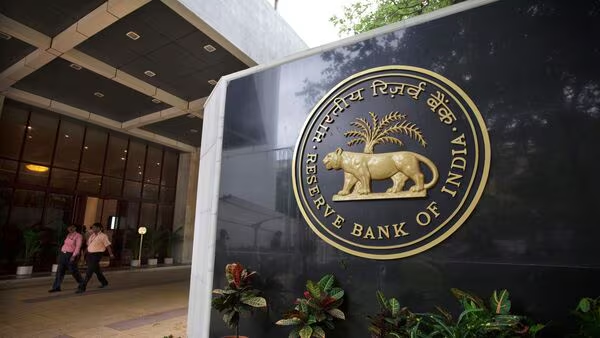🔹 Introduction: A Curious Paradox in India’s Credit Market
India’s inflation is finally showing signs of cooling, yet the Reserve Bank of India (RBI) is still sending red flags over one sector — unsecured lending. It seems counterintuitive at first. With consumer prices stabilizing and economic activity showing resilience, why is the RBI tightening the leash on personal loans, credit cards, and BNPL offerings?
Let’s decode what’s really happening behind the scenes. Because while the macro picture may look calm, a brewing storm might be hidden in the micro-details — one that involves default risks, reckless credit expansion, and financial system stability.
🔹 What Is Unsecured Lending & Why It’s Booming
🔸 Definition: Unsecured lending refers to loans that are not backed by collateral — like credit cards, personal loans, and Buy Now Pay Later (BNPL) services. Unlike home or auto loans, these are given purely based on credit history and income.
🔸 Recent Surge: Post-COVID, there’s been an explosion in consumer credit. Young professionals are swiping more, clicking on EMIs more, and relying on short-term credit for everything from smartphones to holidays. According to RBI data, unsecured personal loans rose by over 23% YoY in 2024.
🔸 Fintech’s Role: Digital lenders and BNPL startups have played a massive role. With instant KYC, slick apps, and AI-based underwriting, accessing loans became frictionless — maybe too frictionless.
🔹 Why Falling Inflation Doesn’t Mean Lower Risk
On paper, lower inflation means lower interest rates, which should stimulate credit growth. But in the case of unsecured lending, the story is more complicated.
🔸 Credit Quality Matters More: The concern isn’t how much credit is being given — it’s who’s getting it. With many borrowers being new-to-credit, gig workers, or young users with thin credit files, the repayment reliability is questionable.
🔸 Inflation Is Sectoral: While headline inflation may be falling, food inflation is still volatile. Essential expenses are rising for low-income borrowers, who are the primary users of unsecured credit. This increases default risk.
🔸 Lending Standards Are Slipping: To capture more users, many NBFCs and fintechs are pushing loans without proper credit assessment. That’s risky when the borrower pool isn’t financially resilient.
🔹 RBI’s Red Flags: What the Regulator Is Seeing
🔸 Early Warning Signals: In its Financial Stability Report, RBI flagged rising delinquencies in personal loans and credit card dues. Even though the overall NPA ratio remains under control, the trend in this segment is unsettling.
🔸 Loan Stacking Problem: Many users have multiple loans running concurrently from various apps and NBFCs. This loan stacking can create a debt trap, leading to defaults across platforms.
🔸 Data Blind Spots: A lot of unsecured lending, especially from fintechs, escapes traditional credit bureau monitoring. RBI fears systemic risk due to lack of real-time visibility.
🔹 Tightening the Screws: RBI’s Measures So Far
🔸 Risk Weight Hike: RBI increased the risk weights on unsecured consumer credit by 25 percentage points. This means banks now need to set aside more capital when giving personal loans or credit cards — discouraging easy lending.
🔸 Focus on Fintech Regulation: RBI is bringing digital lenders under stricter regulatory oversight, including registration norms, capital adequacy rules, and reporting mechanisms.
🔸 Warning Circulars: The central bank has issued advisories to NBFCs and banks to maintain strict lending discipline, especially in personal loans and small-ticket EMIs.
🔹 Implications for Banks, NBFCs & Fintechs
🔸 Banks: Traditional banks might reduce exposure to unsecured retail loans. Expect more caution in credit card issuance and personal loan disbursement.
🔸 NBFCs: These players, already reliant on unsecured segments, may face margin pressures. Higher provisioning and risk weights could squeeze their profitability.
🔸 Fintechs: Startups offering BNPL or instant loans may need to pivot. They’ll face more scrutiny, may need to partner with regulated entities, and slow down customer onboarding.
🔹 Impact on Consumers: The Hidden Cost of Credit
🔸 Higher Interest Rates: As risk perception increases, lenders will demand more interest. Your personal loan EMI might now come with a higher price tag.
🔸 Credit Access Gets Tougher: First-time borrowers or those with weak credit scores may find it harder to get loans or credit cards.
🔸 More Transparency & Regulation: While this means less predatory lending, it also means more paperwork, more eligibility criteria, and less instant gratification.
🔹 The Big Picture: Balancing Growth & Stability
The RBI’s dilemma is classic: foster credit-driven growth or protect the economy from reckless lending.
🔸 Too Much, Too Fast: Credit growth needs to be sustainable. When lending grows faster than income levels or repayment capacity, the bubble bursts eventually.
🔸 Household Debt Rising: India’s household debt-to-GDP is still low compared to the West, but it’s rising rapidly. The worry is not today’s inflation — it’s tomorrow’s defaults.
🔸 Systemic Risk: A few NBFCs or fintechs going bust due to bad loans can create ripple effects across the banking sector and investor confidence.
🔹 Conclusion: A Necessary Brake on a Speeding Car
Despite the cooling inflation, the RBI is not taking chances with India’s credit ecosystem — and rightly so. When loans are being doled out like Diwali sweets, a cautious regulator is better than a reactive one.
The focus now must be on responsible lending, borrower education, and robust credit evaluation — even if it slows down growth temporarily. Because one thing’s clear: in the race between speed and safety, the RBI has chosen the latter.
And maybe, just maybe, that’s what India’s lending ecosystem needs right now.




